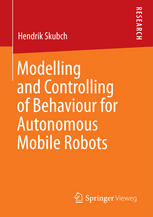

Most ebook files are in PDF format, so you can easily read them using various software such as Foxit Reader or directly on the Google Chrome browser.
Some ebook files are released by publishers in other formats such as .awz, .mobi, .epub, .fb2, etc. You may need to install specific software to read these formats on mobile/PC, such as Calibre.
Please read the tutorial at this link: https://ebookbell.com/faq
We offer FREE conversion to the popular formats you request; however, this may take some time. Therefore, right after payment, please email us, and we will try to provide the service as quickly as possible.
For some exceptional file formats or broken links (if any), please refrain from opening any disputes. Instead, email us first, and we will try to assist within a maximum of 6 hours.
EbookBell Team

4.1
50 reviewsAs research progresses, it enables multi-robot systems to be used in more and more complex and dynamic scenarios. Hence, the question arises how different modelling and reasoning paradigms can be utilised to describe the intended behaviour of a team and execute it in a robust and adaptive manner. Hendrik Skubch presents a solution, ALICA (A Language for Interactive Cooperative Agents) which combines modelling techniques drawn from different paradigms in an integrative fashion. Hierarchies of finite state machines are used to structure the behaviour of the team such that temporal and causal relationships can be expressed. Utility functions weigh different options against each other and assign agents to different tasks. Finally, non-linear constraint satisfaction and optimisation problems are integrated, allowing for complex cooperative behaviour to be specified in a concise, theoretically well-founded manner.